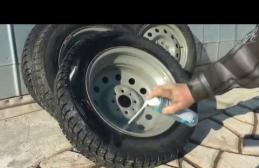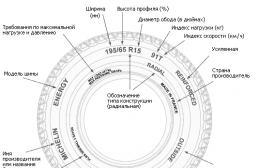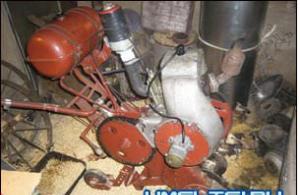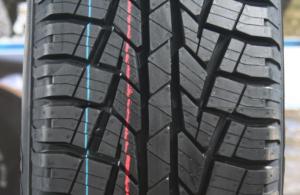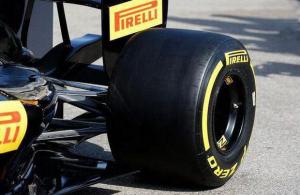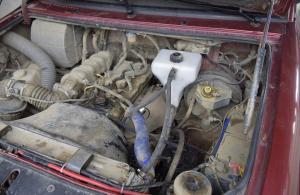Owners sometimes encounter such a situation when at the gas station, instead of diesel fuel, the car was mistakenly refueled with gasoline. Such cases can arise for various reasons, but most often the drivers themselves are to blame. Diesel is filled with gasoline out of habit, and the cases of refueling with the wrong type of fuel occur after the recent change of a gasoline car to a car with.
At the very beginning, it should be noted that refueling a diesel engine with gasoline in some cases threatens with serious consequences for a diesel engine, but with several reservations. Potential options:
- Gasoline was poured into a completely empty diesel engine by mistake;
- Gasoline partially mixed with diesel fuel, since diesel fuel was present in the tank;
In the first case, starting the diesel engine and starting the movement of the car becomes possible only due to the fact that a certain amount of diesel fuel remains in the fuel system. After the moment when gasoline begins to flow into the fuel lines, the engine will simply stall. The subsequent start of the motor will no longer be possible.
This situation is less dangerous, since in most cases the car is evacuated to the service station, gasoline is drained from the tank, the tank and fuel lines are washed, and changed. Often, major repairs are avoided.
The second case is much more dangerous. After refueling with gasoline, the diesel engine normally starts up on the remains of diesel fuel in the engine power system and the car drives, but then a mixture of diesel fuel and gasoline begins to flow into the engine.
The further outcome will depend on the ratio of the amount of diesel fuel and gasoline in the tank. If there is much more gasoline, then the engine will stall, repeating the situation described in the first case. Another option is longer driving on a mixture of two different types of fuel, during which the driver notices a drop in power, hard work is observed. It can also increase significantly, the motor starts to work unstable.
A similar situation is disastrous for a diesel engine, since driving on a mixture of diesel fuel and gasoline causes mechanical destruction of the power unit. Let's take a look at why gasoline is so bad for a diesel engine.
The diesel engine is designed so that the principle of supply and ignition of the working mixture in it is fundamentally different from gasoline units. In a diesel engine, air is supplied separately, then it is strongly compressed. Diesel fuel is injected directly into the cylinders under high pressure at the very end of the compression stroke, sprayed into small particles throughout the volume of the working chamber and ignites independently from contact with the air heated from the specified compression. There is a slight delay until the moment of ignition after injection.
First of all, gasoline is a lighter and less viscous fuel in comparison with diesel fuel. One of the key characteristics of gasoline is its octane rating. This characteristic should be understood as the resistance of gasoline to the property of premature ignition.
An important characteristic of diesel fuel is the cetane number. The cetane number indicates the speed of ignition of diesel fuel. An increase in the cetane number will mean a shorter pre-ignition delay. The octane and cetane number of a fuel is dependent on each other so that the higher the octane number, the lower the cetane number will be.
For gasoline engines, it is important to avoid premature detonation of the air / fuel mixture. In a diesel engine, it turns out that it is necessary to achieve ignition of the mixture with a delay. It turns out that gasoline with a high octane number in diesel fuel will reduce the cetane number of diesel fuel, and the ignition delay period of such a mixture will noticeably increase. A similar mixture in the diesel cylinder burns out later than the intended moment, the power and output from the internal combustion engine fall.
Another feature of the diesel fuel supply is that the diesel injector first makes a small post-injection, and only then doses the main portion of the fuel. This solution was created so that the mixture burns as “calmly” and fully as possible. At first, a small portion of diesel fuel from the post-injection is burned in the cylinder, and only then from this torch the main volume of diesel fuel is ignited, which is supplied with a slight delay. Due to this, the gas pressure on the piston builds up evenly, a small and main portion of diesel fuel burns with maximum efficiency. The diesel engine itself, thanks to two-stage injection, runs smoother and quieter, the combustion process of the mixture loses its tendency to explosive and shock.
A decrease in the cetane number due to the ingress of gasoline increases the ignition delay time. This leads to the fact that at the time of post-injection the fuel does not ignite. Further, the nozzle delivers the main dose of fuel to the chamber, but ignition does not occur again. The mixture will flare up when the piston compresses it as much as possible in the cylinder.
The result is an instant explosion of the entire volume of fuel in the combustion chamber. The energy of the rapidly expanding gases begins to catch up with the piston descending downward, and strong pressure is created on the cylinder walls. Suffers from such shock loads,. The diesel engine starts to run roughly and loudly and produces a distinct metallic sound.
The pressure resulting from untimely and explosive combustion of the mixture greatly reduces the life of the diesel engine, can lead to cracks in the cylinder wall, destruction of the piston, etc. The more gasoline reduces the cetane number of diesel fuel, the more serious the consequences for the diesel will be.
Gasoline and diesel fuel equipment
Another distinctive feature of gasoline is its much lower ability to lubricate compared to fuel for a diesel internal combustion engine. The creators of diesel engines take into account the lubricity of diesel fuel when creating diesel fuel supply equipment, which allows parts to be lubricated with diesel fuel, and not to use the engine lubrication system.
If the diesel is diluted with gasoline, for the key elements of diesel fuel equipment (,), this means a very rapid failure of the plunger pairs of the pump and other parts subject to stress. The result is very rapid wear of the rubbing parts. Particles of such wear enter the fuel system and the engine itself, disable diesel injectors, and destroy the cylinder-piston group.
What to do if diesel was filled with gasoline
To begin with, there is a way among experienced domestic diesel operators when truck drivers deliberately add gasoline to diesel fuel in winter. This is done so that the fuel does not lose its fluidity. Pour gasoline so that its amount does not exceed 8-10% of the total amount of fuel in the tank.
For this reason, there is a misconception that a small amount of gasoline will not harm a diesel engine. Immediately, we note that for a Soviet tractor or KamAZ, this is real. As for the diesel engine of a modern truck or car, then such methods cannot be resorted to.
Foreign manufacturers even indicate that if the diesel was filled with gasoline, the engine then started and the car moved, then the following actions are necessary:
- complete removal of fuel from the tank;
- checking the booster pump yoke for the appearance of metal shavings;
- in the absence of chips, drain the fuel from the fuel supply system;
- carry out a complete flush of the power supply system according to the manufacturer's recommendations;
- replace fuel filters;
The presence of shavings, which is detected by means of a magnet, will require replacement of the entire diesel engine power system: injection pump, injectors, fuel filters, fuel tank, etc.
Now let's get back to the practical situation. If you have filled up gasoline and the diesel car will not start, then it is quite possible to get off by flushing the fuel system and replacing filters. Don't try to start the engine again! Call a tow truck immediately for the speedy transportation of the car to the service station.
It will require dismantling and draining the fuel tank, replacing filters, flushing the fuel system. As practice shows, these actions are enough, expensive repairs can be avoided. In the event that you drove a certain distance after refueling and stalled, after which the engine will no longer start again, then two scenarios are likely:
- flushing the diesel power system;
- replacement of the power supply system or its individual elements;
Everything will directly depend on how much damage the gasoline managed to inflict on the fuel equipment. If, after refueling, a sharp drop in engine power, hard operation of the diesel engine and other symptoms noted above are noted, then there is a high probability of driving on a mixture of gasoline and diesel fuel. In this case, you must immediately stop driving the car, turn off the engine and take appropriate measures for high-quality diagnostics, flushing and / or repair of the power system.
Read also
What is urea used for in a diesel engine exhaust purification system? The use of AdBlue reagent in the liquid cleaning system of exhaust gases.
The question should be immediately divided into two parts. The first is when diesel fuel got into the gas tank and the driver found out about it immediately, without starting the engine yet. In the second case, there is a much more dramatic scenario, when the "substitution" makes itself felt only in motion.
The engine has not started yet
If the driver fills a gasoline car by himself, then he must be completely "out of his mind" in order to take the pistol from the holder with the inscription "DT" and pour diesel fuel into the tank. But the workers of the gas station are either poorly versed in the nuances of the Russian language, and therefore they may well be mistaken. If you find this at the cash register on the basis of a check or the words of the operator, then, of course, all responsibility must be assigned to the employees of the gas station. The engine should not be started even in order to drive slightly away from the fuel dispenser - ask the petrol station management to call a tow truck to deliver the car to a service station, where it will be necessary to remove the fuel tank, rinse it and replace the fuel with the correct one.
"Substitution" of fuel was discovered on the way
It is much worse if you did not notice anything special at first after refueling. This happens if a little diesel fuel is poured and its ratio with gasoline is 1: 2 or more in favor of light fuel. The engine will gradually lose power, twitch, smoke. But you have already driven some distance from the gas station. In almost any situation, except when the life of people depends on the advancement of the car for several hundred meters, the engine should be stopped immediately, returned to refueling in a towboat or tow truck, and an examination of the fuel poured into the tank should be required. In this case, it is better to keep receipts - at least from the last gas station.
Upcoming renovation
And now I'll tell you what I did to save the car: I remember it was a Kia cee "d, which was filled with solar oil. The owner did not understand the situation, and the car in tow fell into my hands. What happened to the car and how I had to fix it Problems?
In any case, remove the fuel tank, drain its contents, rinse and fill with clean gasoline. In addition to this mandatory procedure, I turned out the candles. They were covered with a thick layer of black carbon. In this case, cleaning will help. But it is better to replace the candles. Compression test showed that in three cylinders its value did not exceed 4-6 bar. Either the rings are broken, or coked up - they have lost their mobility and "lay down". Having filled in the decoking composition for the night, in the morning I measured the compression of more than 11 bar - this should be so much on a working engine. This means that the piston rings have survived. Just in case, I dismantled the fuel injectors and flushed them. Learn more about this procedure.
Once again I flushed the cylinders through the spark plug holes. After that, I changed the oil. This must be done because the flushing liquid inevitably gets into the oil. There was not enough seizure of the crankshaft liners yet! In this case, it is not necessary to change the oil filter. After starting, the engine ran smoothly. I changed the oil and filter again. Giving the car to the owner, he warned that after such an adventure the car might not be a tenant. But that's a completely different story.
Needless to say, the situation with an error at a gas station is almost anecdotal, but everything happens. Be careful at the gas station, and if this happens, do not expect to get there by chance. Share in the comments if this has happened to you.
Some motorists faced such a problem when diesel fuel was poured instead of gasoline at a gas station or a diesel car was refueled with gasoline. Not everyone knows how to act in such a situation in order to avoid serious problems in the future.
The engines of modern cars are becoming more and more complicated and more sensitive to the quality of the fuel being filled every year. For this reason, damage to fuel systems and engines occurs more often on new cars. Motorists should be aware that diesel and gasoline power units work according to fundamentally different algorithms, therefore, problems in the event of pouring the wrong fuel may differ.
What happens if you pour gasoline into the tank of a diesel car
Situations when diesel cars are fueled with gasoline are more common. For example, when switching to heavy SUVs and buying second cars in a family, people prefer premium models, which are most often equipped with diesel engines. Arriving at a gas station, car owners habitually fill up with gasoline, forgetting that the SUV's engine runs on diesel fuel.
So what happens if gasoline is poured into a diesel engine and what to do in this case? In this case, starting the car will be very difficult, since there is diesel fuel in the fuel system, which is enough to start the engine and work for several minutes. This should not be done. First you need to remember how much fuel was in the tank before visiting the gas station and how many liters you filled.
If you come to a gas station with a "burning light", then gasoline will very quickly get into the engine combustion chamber.
You need to call a tow truck and take the car to a service station. This option is the most budgetary for your wallet, since the repairmen will dismantle and drain the tank, and then fill it with diesel fuel. These actions are often enough.

If you do not immediately notice that you have filled up your diesel car with gasoline and start moving, you will not be able to drive much. After a few kilometers, the car will stall and you will not start it. This scenario is the most painless for you, since in a car service you only have to clean the fuel system and replace filters.
In the worst case scenario, you face the following:
- fuel draining and tank flushing;
- flushing the fuel system;
- replacing the filter in the tank;
- flushing nozzles and replacing candles;
- oil and filter change
What happens if you pour diesel instead of gasoline
What happens if diesel is poured into a gasoline engine? In this case, you will find yourself in a much worse situation than in the previous case. Gasoline has a lower density than diesel fuel; therefore, when refueling, diesel fuel will sink to the bottom of the tank and quickly penetrate the fuel line. Almost instantly you will hear a knock in the engine, feel a deterioration in dynamics, and black smoke will start pouring out of the exhaust pipe.
The initial steps in this case are the same: it is necessary to empty the tank and fill in a suitable fuel. At the same time, the penetration of diesel into a gasoline engine does not always lead to disastrous consequences.

If the tank was empty, and you filled up a large amount of diesel fuel, the engine will immediately stall and will not be damaged. In this case, the compression ratio of the engine and the spark from the spark plugs are not enough to ignite the fuel mixture.
If the tank was at least half filled with gasoline, and you fill up a certain amount of diesel fuel, you will be able to cover some distance by car. In this case, the filters of the fuel line and injectors will become clogged, and with prolonged driving, the engine may be damaged, since it will not be able to properly synchronize the functioning of the cylinders.
We continue to publish articles from the series "What will happen if ...". Today we will discuss what will happen if you mix up the type of fuel.
We will not go into details of how and how diesel replaced gasoline, but it is worth noting that there are not so few cases when diesel is poured into the tank of a gasoline-powered car.
What is the difference
Both fuel and engines designed to work with a certain type of fuel have fundamental differences.
When distilling oil at different temperatures, fractions are obtained, which, after further processing, turn into:
- petrol,
- kerosene,
- diesel,
- fuel oil.
Thus, gasoline and diesel fuel differ both in chemical composition and in combustion characteristics: they have different contents of various impurities, different viscosity, density and ignition temperature.
Internal combustion engines are also different for both types of fuel: in a gasoline engine, the air-fuel mixture is fed into the cylinders, where it is ignited by an electric spark. The fundamental difference between a diesel engine (along with a lot of other differences) is that the heating and ignition of the air-fuel mixture occurs from compression inside the cylinder.
Diesel instead of gasoline
In a gasoline engine, the pressure at which the air / fuel mixture enters the cylinders is much less than that required to ignite the diesel fuel. Therefore, while there is a little gasoline left in the fuel system, the combustion process itself will change dramatically: diesel fuel will not burn completely, a large amount of soot will form.
Diesel fuel getting into the fuel lines of a gasoline car will lead to clogging. It is also very likely that diesel will seep into the crankcase through the cylinders - i.e. the engine oil will become unusable.
And when the remaining gasoline is used up, the engine will stall.
As a result:
- flushing and repairing the engine, at least - the cylinder-piston system,
- flushing and repair of the fuel system, injectors,
- replacement of the fuel filter,
- Change of oil.

By the way, it is worth noting that carburetor engines are somewhat more loyal to diesel fuel than injection ones.
Gasoline instead of diesel
Gasoline has a much lower lubricity (and parts of the fuel equipment are lubricated with oils that are part of the diesel fuel), a different thermal conductivity, a different combustion mode.
A diesel engine will run on an unusual fuel for a little longer than a gasoline engine. But the consequences can be much more serious: poor lubrication and a different combustion temperature will lead to overheating of the engine and may even cause its destruction.
As a result (if, of course, the engine is to be restored), half of the parts will have to be replaced.

What to do right away
After filling the fuel uncharacteristic for a car, the "necessary" fuel still remains in the fuel line. Therefore, when filling a diesel gas station, a gasoline car can drive some more distance, during which the engine will be damaged, sometimes irreparable.
The same applies to a diesel engine with gasoline in the power supply system, with the only difference that the diesel engine will most likely continue to work until a critical overheating occurs or it is turned off.
Therefore, in case of an error at a gas station - under no circumstances should the engine be started- this will save both the engine itself and the fuel system.
It is better to call a tow truck or take the car in tow to the service station, where the fuel will be drained and the gas tank washed. Flushing the gas tank is especially important for a gasoline car, a diesel engine is more loyal to minor gasoline residues.

What then
The cost of repairs directly depends on the damage caused to the engine: from minimal (which will entail flushing the tank and fuel system) to replacing the engine.
Typically, a set of works boils down to the following:
- draining fuel and flushing the gas tank,
- flushing fuel lines,
- replacement of the fuel filter,
- flushing injectors, replacing spark plugs,
- replacement of oil and oil filter.

1 - fuel tank; 3 - expansion box; 4 - filler neck plug; 5 - fuel level sensor; 6 - fuel supply line; 7 - drain fuel line; 8 - fuel filter; 9 - fuel pump; 10 - mesh filter; 11 - fuel pump housing, 12 - pressure accumulator; 13 - protective pallet; 14 - adsorber
It's not all that scary
Diesel fuel in a gasoline car is a disaster for the engine, but with a “diesel” it is a little simpler. The fact is that if the diesel engine is provided with the necessary lubrication (for example, to add oil to the tank), it will be able to work on gasoline for some time without any special losses. Of course, after such a procedure, you should still flush the fuel line.
And for some diesel cars, it is even advised to add gasoline to the tank in cold weather. The amount of added gasoline depends on the ambient temperature and can be up to 5% and even up to 25% of the total volume.
Outcome
If the full tank is filled with the “wrong” fuel, do not start the engine! If the engine is not started, everything can be done only by flushing the tank and the fuel system.
A gasoline engine cannot run on diesel fuel. Therefore, it makes no sense to add gasoline to the tank "up to the neck".
A diesel engine, on the contrary, can run on fuel with an admixture of gasoline (preferably no more than 5%). Therefore, if a little gasoline was poured into the tank, it can be diluted with a diesel engine, and this will not critically affect its performance.
Even attentive car owners sometimes confuse "pistols" with fuel at gas stations. It is important to know what the threat of refueling a diesel engine with gasoline and what to do to avoid the consequences.
A bit of theory: how gasoline differs from diesel fuel
Gasoline and diesel fuel differ in chemical composition and combustion characteristics, including ignition temperature.
- Diesel fuel is produced like this: the crude oil is heated to produce diesel fractions. Then the fractions are split (this is called cracking) at different temperature conditions. Further - the stage of hydrotreating, where sulfur compounds are removed from diesel fuel. At the final stage - the addition of additives that improve the viscosity and fluidity, and for winter diesel fuel - the process of wax separation.
- To get gasoline, the crude oil is heated, releasing gasoline fractions with a large amount of sulfur and aromatic hydrocarbons. In the process of cracking (splitting fractions), hydrocarbons and sulfur are removed from the fuel and the octane number is increased. Then, depending on the type of gasoline, additives are added.
At first glance, both that and that type of fuel are obtained from oil, by direct distillation, splitting into fractions, purification from sulfur and adding a package of additives.
So what's the difference?
Both oil and the fuel obtained from it, and even associated gases (methane, butane, propane, etc.) - all of this belongs to the group of hydrocarbons. That is, these chemical compounds are composed of two elements, carbon + hydrogen.
Differ only chains of molecules. The more atoms are included in a molecule of a substance, the longer the chain of molecules - and the higher the boiling point, when the liquid turns into gas.
- For example, ethane (C2H6) will boil at -67 ° C, butane (C4H10) already at -18 ° C.
Based on these data, it is possible to separate mixed gases (heat to the required temperature and pump out those that have turned into gas) and extract gasoline, kerosene and diesel fuel from oil.
Depending on the brand of gasoline, its formula is from C7H16 to C11H24 (the shorter the chain, the better the quality of the gasoline). The kerosene chains are longer, from C12 to C16. Diesel fuel has even more.

Accordingly, fuel production is based on bringing oil to the desired temperature:
- oil is heated to 33-205 (depending on the type of gasoline), gasoline in the form of gas is fed into the chamber to cool down to a liquid state;
- in the same way, by increasing the boiling point, kerosene is obtained from oil, and then diesel fuel;
- As a result of all heating, an oily liquid - fuel oil - remains from the oil.
Thus, the length of the hydrocarbon chains determines the boiling point (ignition) and the degree of flammability. This, as well as such parameters as density and viscosity, is the difference between gasoline and diesel fuel.
Diesel fuel- a mixture of paraffinic, naphthenic and aromatic hydrocarbons, which boil off at temperatures from 170 to 380 ° C. The viscosity of diesel fuel is about 2-4.5 mm2 / s.
Petrol ignites at a lower temperature, does not have the lubricating properties of diesel fuel and is more fluid.
Consequences of refueling a diesel car with gasoline
If you confuse the type of fuel at the gas station and pour diesel fuel into the tank of a gasoline car, he will go. At least as long as the remaining gasoline remains in the fuel system.
When only diesel remains, the car will stall, and it will be necessary to flush the engine, fuel system and change consumables (filters, spark plugs, etc.). But in general, this is a more optimistic forecast.
But if you fill a diesel car with gasoline, the consequences will be much worse.
It's all about two factors:
- the modern fuel system of diesel cars is extremely sensitive to fuel quality;
- elements of diesel fuel equipment are lubricated with diesel fuel, and gasoline has a different degree of viscosity - it is "dry", and this can damage the injection pump or injectors.
If you pour gasoline into the tank of a diesel car, it can even run on such fuel for a while. But the lack of lubrication and other heat transfer during gasoline burning will cause the engine to overheat, up to its total damage.
The specific forecast depends on many factors. The amount of fuel poured in (and available in the diesel fuel system) and the design features of the car and its fuel system are also important.
So, drivers in cold regions still add a little gasoline or kerosene to diesel fuel in order to combat the paraffinization of fuel in the cold in this way - and do not think that this somehow harms the engine.
Nevertheless, in the case of refueling a diesel car with gasoline, the owner risks the engine resource and the correct operation of the fuel supply system.

Engine resource
Gasoline added to diesel fuel lowers the diesel fuel cetane number. As a result, the fuel's ability to self-ignite changes (as we remember, diesel fuel ignites from strong compression in the cylinder).
That is, with the added gasoline, the fuel in the engine will ignite with a delay, and burn under increased load. Such hard work will not be reflected in the best way on the details of the engine crank mechanism.
If there is a lot of gasoline in the diesel fuel, it will make it difficult to start the diesel engine in frost. And the exhaust will become smokier.
Failure of fuel equipment
As we have already mentioned, the rubbing parts of the diesel fuel system are lubricated during fuel operation.
When gasoline is added to the fuel, the lubricating properties of diesel fuel deteriorate, the loaded elements work dry, which is fraught with metal chipping in the nodes and the ingress of metal dust and crumbs into the fuel lines.

